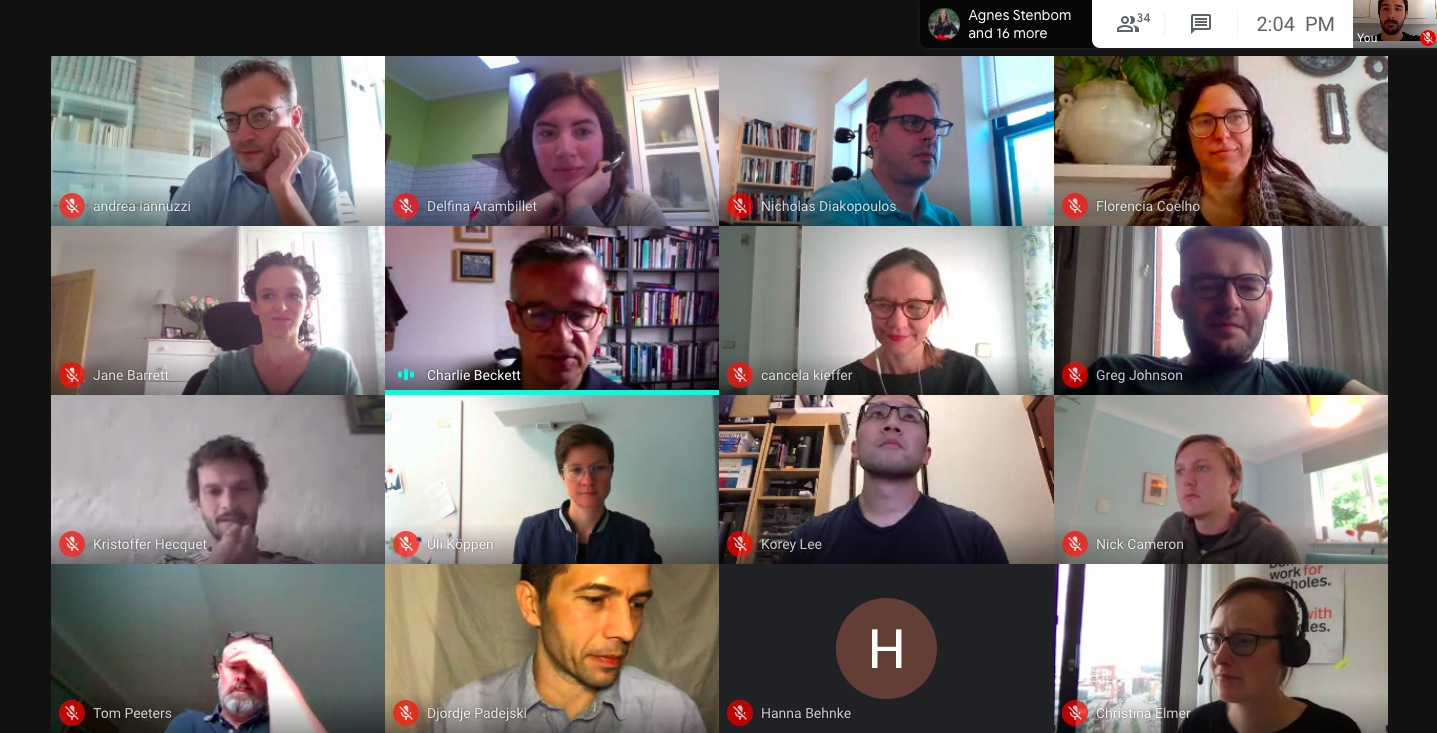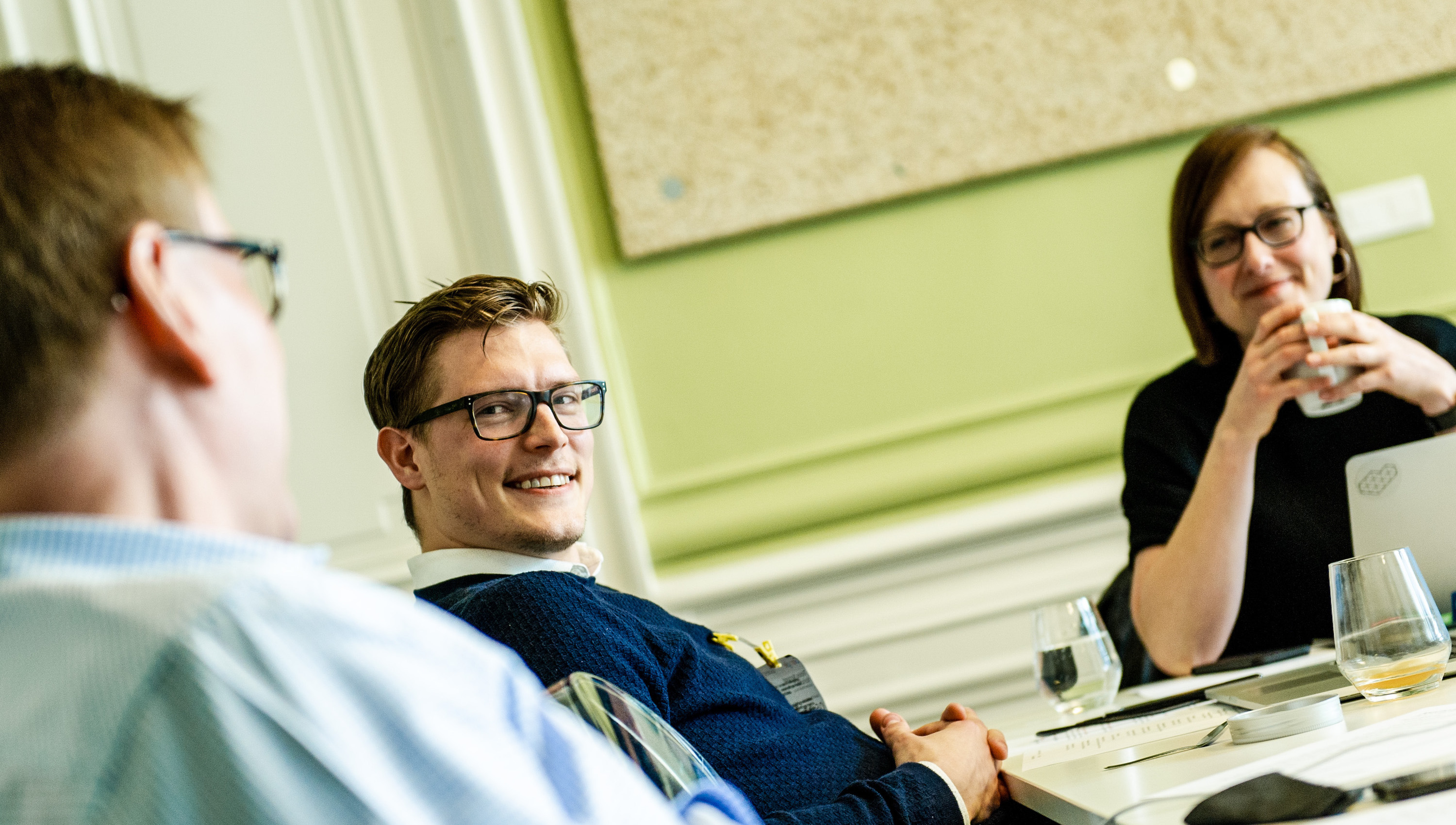Mapping sources of bias on a timeline, the automated recommendation of SEO headlines and the gamification of loyalty. All of that and much more in the second episode of the Collab Diary.
In previous episodes
The JournalismAI Collab is an experiment that involves 20+ news organisations from across the globe: they are working together for six months to conceive new journalistic solutions powered by AI and machine learning.
In the first episode of this Diary, we discovered how the five teams decided to frame the challenges they are exploring. Today: What potential solutions are they starting to discover and how are they going about finding them?
What’s new
Four weeks ago, we asked the teams to think of concrete ideas they might develop to address the challenges they chose to focus on. The summer is making it difficult for groups of 5-to-10 people in different time zones to coordinate but each team still managed to make significant progress:
Team #1: How might we leverage AI to understand, identify and mitigate newsroom biases?
Team 1 started to explore the issue of bias by reflecting on where bias might creep in the journalistic process. From staffing to leadership, the risks of embedding unconscious biases into the process are too often underestimated. Risks extend to what stories the newsroom decide to tell and from what angles, who journalists speak to and who is quoted in the stories that get published, all the way down to what stories get onto the front-page and which ones the newsroom decides to promote on social media. The map or timeline that will result from this process promises to become an effective tool to understand and identify potential biases in the most detailed way possible.
Moving on to the ‘mitigate’ part of their mission statement, Team 1 is also compiling a comprehensive list of existing products and services developed to address the issue of bias in journalism. The goal is to eventually turn this list into a digestible public overview that might help the whole industry.
Team #2: How might AI help us use existing multimedia content/archives to improve the quality of new contents and save time to our journalists?
So far, Team 2 is zeroing in on two main ideas to address their challenge and support news production. The first one is to develop a way to automate the recommendation of related content so that the journalist working on a story could receive suggestions on what other stories previously produced by the newsroom might help them to add context – or complement in any other way the new story that is being written.
The second idea focuses on automating and optimising the suggestion of SEO headlines and story URLs – a time-consuming task that doesn’t have many fans in newsrooms. Both ideas emerged from a clever survey that Team 2 is running to collect the needs and insights of their colleagues in different departments.
Team #3: How might we use methods of automation and structured journalism to identify and re-use evergreen content in a way that eases accessibility and makes content snackable?
Evergreen content is a feature of both Team 2’s and Team 3’s mission statements. The difference is that Team 2 is looking at leveraging that content to support journalists in the news production, while Team 3 hopes it can help make the news more accessible and understandable for the audience. To do that, they are reflecting on how to define and identify content that can be considered evergreen, as well as what are the factors that make a piece of content still relevant and valuable long after its publication.
In parallel, they are exploring a second idea: how we might produce automated summaries of text and audio content and present them in a user-friendly way. For both ideas, the next phase will focus on identifying use cases where evergreen content and summaries can be used to enrich and make more accessible freshly produced pieces of content.
Team #4: How might we use AI to suggest new content from users’ individual instructions, or from a specific subject, to turn anonymous users into registered users through greater engagement and loyalty?
Team 4 started to explore some of their assumptions related to content discovery and smart recommendations and soon realised there are a host of interesting questions to ask. So far, their effort to compile those questions in a comprehensive list led them to group them in three main categories:
- What should recommendations be based on? (i.e. similar content, user’s navigation history, popular news)
- What is the best way to deliver recommendations? (i.e. widgets, push notifications)
- What should recommendations optimise for? (i.e. shares, conversions, time spent on page)
Early ideas that might be developed in the next phase include the automated production of personalised newsletters based on what articles readers have missed and the design of a content-driven funnel: providing personalised recommendations to users based on their individual news consumption to maximise the odds of converting returning users to subscribers.
Team 5: How might AI help us know more about our visitors? How might we minimise churn and better engage users? How might we optimise conversion funnels?
Team 5 conducted already a series of in-depth interviews with industry experts that led to the formulation of a long list of ideas, which then they narrowed down to three. One is centred on automating the creation of a ‘risk score’, by analysing a series of engagement metrics and combining them to identify subscribers at risk of churn and suggest actions the newsroom might take to re-engage them. The second idea was described by the team as the ‘gamification of loyalty’: they want to explore ways to make the user experience more interactive for subscribers to make loyal users feel more valued and ultimately increasing engagement. This might include celebrating milestones reached by the user (i.e. numbers of articles read), and reputation badges to be gained via comments and shares.
Finally, Team 5 is also considering the compilation of a playbook to define KPIs and best practices for conversion funnels that could help newsrooms with different business models recognise where AI might be used and how.
Teams are now using the month of August to further explore and define these ideas and their potential. In September, we’ll switch gears and move to the ideation phase. With some extra help…
What is a team without a coach?
On top of the five teams that make up the Collab, we have created a new one: the coaching team. Five experts with extensive expertise working at the intersection of AI and journalism agreed to join the project to mentor the teams and support their work with feedback, perspective and original insights. The stellar line-up of mentors includes:
- Alyssa Zeisler, R&D Chief and Product Lead for Newsroom Tools at The Wall Street Journal
- Ana Jakimovksa, Chief Product Officer at Culture Trip and former Director of Product at The Guardian
- Dmitry Shishkin, Former Digital Development Editor for BBC World Service and Chief Content Officer at Culture Trip
- Jeremy Gilbert, Medill’s Knight Chair for Digital Media Strategy at Northwestern University and former Director of Strategic Initiatives at The Washington Post
- Lisa Gibbs, Director of News Partnerships at The Associated Press, leading AP’s strategic efforts on AI and automation
What we are learning
- We realised the need to be flexible with the structure of the Collab. Summer is inevitably slowing things down and that must be taken into account. It wouldn’t benefit anybody if we were to rush teams through the exploration phase, which is the most important part of any experiment. Furthermore, we are all humans leaving through the strangest of years, which makes it more important than ever to respect the space and time all of us might need to recharge and be with our loved ones.
- We have started to collect some early feedback from the participants to understand where we could improve and make the Collab even more valuable for them. So far, what we are hearing is that a better-defined framework for the project should be in place from the start, including giving more direction to the participants on what platforms and communication channels to use.
- It’s been fun to see the teams approaching their challenges in different ways. Some moved quickly to formulating concrete ideas of tools or resources they could prototype, while others decided to spend a bit more time exploring the questions that surround their challenge. Four weeks ago we suggested them to collect insights from outside their team and they all did it in different ways: from surveys to market research and in-depth interviews to experts and colleagues. After all, we are all experimenting.
How you can get involved
Soon, the teams will need help. One of the biggest challenges to use AI technologies in journalism is the lack of technical skills that can translate ideas into concrete algorithmic solutions. If reading these words you are thinking “hey, I can help!”, we’d love to hear from you. Contact Mattia at M.Peretti@LSE.ac.uk and let’s talk!
You can also share this post with anyone you think might be interested in contributing to the Collab. And do sign up to our newsletter to stay updated and follow the work of the Collab teams until the end of the year.
JournalismAI is a project of Polis, supported by the Google News Initiative.






